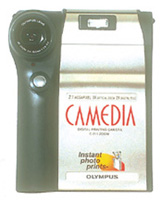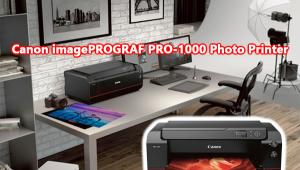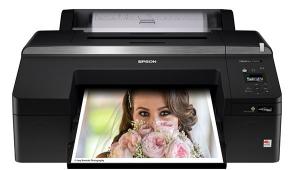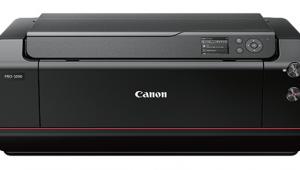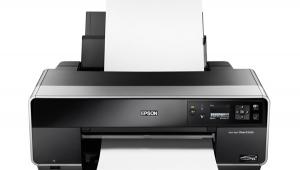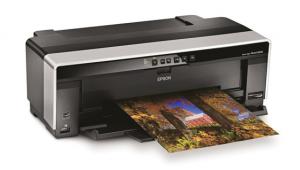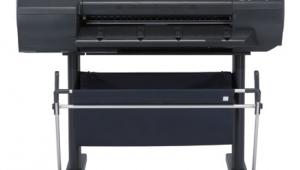Instant Prints
Mini Printer Roundup
|
If you're an instant gratification junkie--by nature or by profession--portable mini printers give new meaning to the word instant. Edwin Land knew what he was doing when he developed Polaroid's instant print technology way back when, but with the advent of digital, we now can have our instant prints and image files, too. So, if you're someone who likes or needs immediate, on-the-fly results, check out these mini printers. The applications are endless and so is the fun. Canon CP-10 Setup is relatively simple: insert the paper and ink ribbon, plug the printer into an electrical outlet and plug the camera into the printer (both the AC adapter and camera/printer cable are supplied with the printer). Image selection (including DPOF) and printer settings are controlled in-camera, as is printer activation. Print speed, including transfer time from camera to printer was good at about one minute or less. Although the CP-10's use is limited because of its camera dedication and cable requirements, we really liked this tiny translucent blue dye sub printer. The CP-10 measures a mere 4.2x4.9x1.8", weighs 18 oz, and delivers high quality output. Colors are bright and accurate, blacks are rich but a little too dense in solid areas, resulting in a minor loss of details. Prints are, of course, small (3.4x2.1"), but have nicely rounded edges for a unique, polished look. Output options include printing either a single image (bordered or borderless) or eight sticker-sized frames of the same image on one sheet. Because of differences in image/paper ratio, borderless images are automatically cropped and, as a result, substantially change the composition. We preferred having a border since these prints are cropped only slightly, with little impact on composition except for the tightest of shots. Price per print is very economical at around 45 cents an image and paper/ink ribbon sets are available in 36 single sheet and 18 sticker sheet packages. At the very least, a printer/camera combo will cost you about $699 list (a special CP-10/A10 "kit"). Individually, the printer costs $299, with camera prices of: $349 for the 1.3 megapixel A10; $399 for the 2.1 megapixel A20; $699 for the 2.1 megapixel S300 Digital ELPH. The CP-10 may not be the most economical or flexible mini printer option around, but if you're thinking about buying a digital camera and have a hankering for a cool little printer and great prints, these combos are definitely worth a close look. For more information, contact Canon U.S.A. Inc. at: www.usa.canon.com |
|||
Olympus Camedia P-200 The printer comes equipped with both SmartMedia and CompactFlash card slots. There are limitations, however: up to 64MB for SmartMedia; 160MB for CompactFlash Type I; 340MB for CompactFlash Type II, so those of you with large capacity cards may have to downsize in order to use this printer. Optional parallel and USB connection kits (PC only) are available if you want to connect the printer to your computer. Output is quite good, with accurate colors and excellent detail. Solid areas of black could be a touch denser but don't detract from the image quality. Of the three printers, the P-200 is the only one that doesn't automatically crop the image, though images can be trimmed by the user prior to printing. As a bonus, you can also adjust the print's sharpness (soft, normal, and sharp). Print options include full frame, as well as two, four, nine, and 16 split images per sheet and, thankfully, an index print of up to 30 successive images. The index print is almost a necessity when you're using a camera other than an Olympus or if you've deleted images from the media card and file numbers are no longer sequential. Although we were able to print images from various Nikon, Canon, and Fuji digital cameras, the prints didn't always match the file number we selected and we ended up with prints of images we didn't want--a big hassle and a waste of consumables. Rather than tagging the images for DPOF, we decided to use an index print so we could see the image we wanted and select the sequential frame number on the printer. We were disappointed to find that the P-200 couldn't print images we retouched in the computer and then saved to the CompactFlash card. Unfortunately, we had to revert to the original images without being able to correct the redeye and other imperfections. Other than that, the P-200 is a fine printer with relatively inexpensive output cost, especially considering the larger print size. A paper/ink ribbon kit for 25 prints can be had for a street price of $19.95. For those of you who want flexibility and a larger print size, the $450 price tag may be worth it. For more information, contact Olympus America Inc. at: www.olympus.com |
|||
Polaroid P-500 Powering the printer is never a problem since each 10-pack of Polaroid 500 instant film has a battery built into the film pack with enough juice to print 10 images--no muss, no fuss, and no cables. A battery indicator lets you know if, by chance, the printer is running low on juice and the printer automatically shuts down after a few seconds of inactivity to save power. The printer accepts CompactFlash Type II and III as well as SmartMedia cards (a SmartMedia adapter is included) from most digital cameras, so compatibility is rarely an issue. However, the printer only recognizes the JPEG format, so you won't be able to capture a TIFF image and print directly from the P-500. Choosing specific images is almost foolproof since it works by frame and not file number. Images can also be tagged for printing in-camera as long as your camera offers either DPOF or Lock features. While multiple images cannot be printed on one sheet, multiple copies of a single image can be automatically printed. But at $1 a print, you may want to choose your images carefully. Setup requires nothing more than inserting a pack of 500 instant film, much as you would with a Polaroid instant camera. Operating the printer is a no-brainer--the display panel and control buttons are fairly intuitive even without reading the manual. It only takes about 25 sec or so for the image to be printed and ejected. But as with all Polaroid instant film, you have to wait a few minutes for the print to fully develop. The display panel indicates how many sheets of film are left, so you'll know when to re-load. At 2.15x2.86", print size is smaller than the Olympus, but larger than the Canon. Only minor cropping occurs, but is hardly noticeable. Image quality was good with richer and more vibrant colors than we expected, though the film had a tendency to go heavy on the red. Overall, Polaroid output quality didn't quite stand up to that of the dye sub printers, but that's understandable considering the differences in print technology. However, the P-500 has a lot going for it in three key areas: portability, compatibility, and ease of use. At a list price of $249, the Polaroid P-500 makes good sense for folks who want to buy a portable printer without breaking the bank. For more information, contact Polaroid Corporation at: www.polaroid.com |
|||
Olympus Digital Printing Camera C-211 Zoom Granted the camera is a bit bulky and lacks an optical viewfinder because of the internal printer, but it's a fully functional digital camera with a 3x optical glass zoom (2x digital), a built-in six mode flash, QuickTime movie mode, and is both Windows and Mac compatible (USB cables included). The C-211 is a rare breed of multifunctional products that makes sense. While this camera may have the most appeal to vertical market pros like insurance adjusters and real estate agents, now that the price has dropped to $599, the C-211 may find its way into some consumer camera bags as well. |



